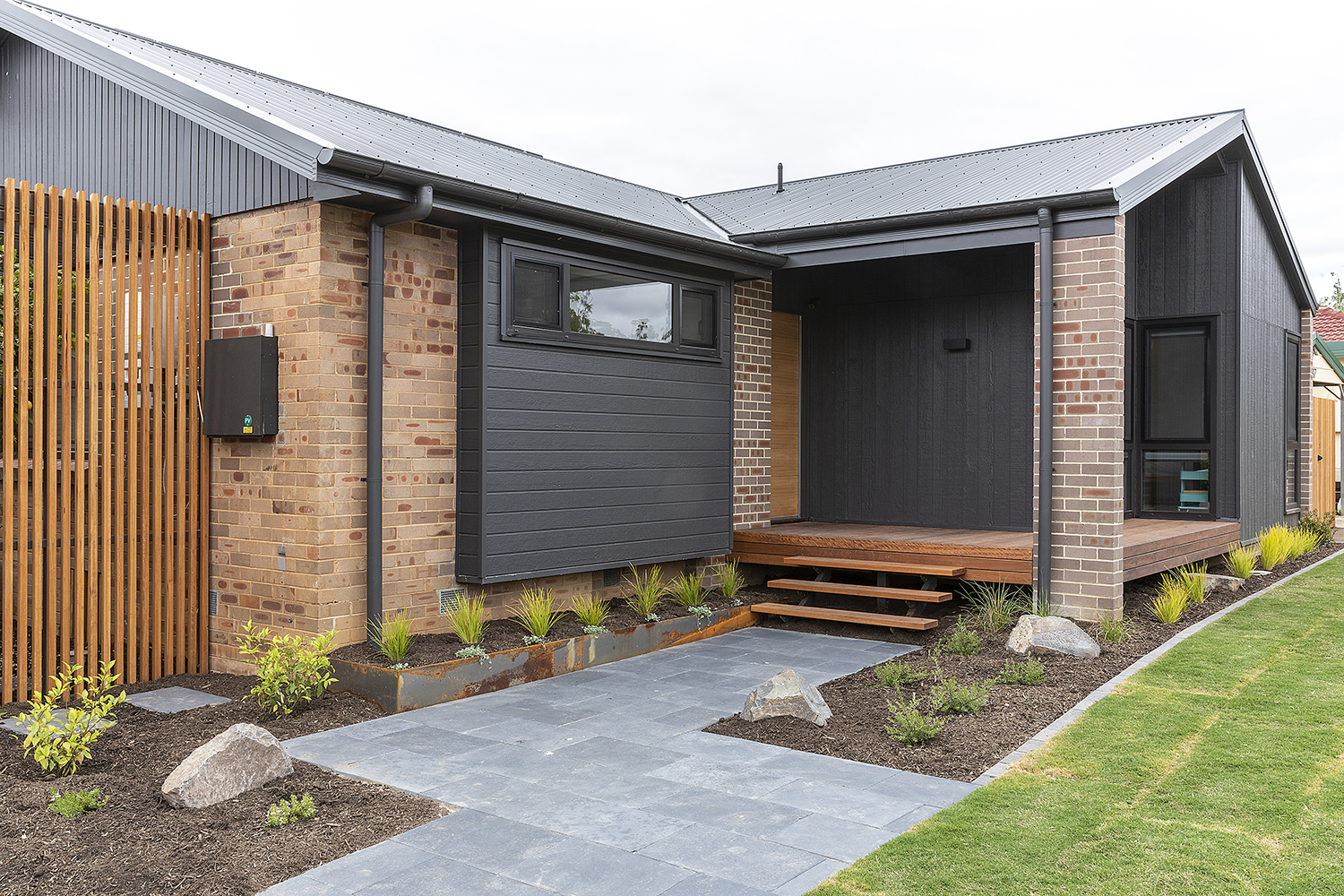Blackburn House
Light House Architecture & Science
Once ready for demolition, Blackburn house is now an elegant and understated home that was once one of Canberra’s original 1960s ‘ex-govies’ – the stock of homes constructed en masse to house the city’s burgeoning public service.
Working mainly within the original extended footprint, the existing external walls, roof and floor were all largely retained, as were some internal walls. The floor plan was rejigged and extended to the front by just 21 square metres to create a 145 square metre family home comprising four bedrooms, two bathrooms, family home with more functional space and better connection to the garden.
The new home achieves an energy efficiency rating (EER) of 7.7 stars, and an airtightness score of 4.95 m3/m2/hour at 50Pa. This level of airtightness was achieved using standard residential construction materials and methodologies, and without the use of internal air barrier membranes and services cavities, which keeps construction costs much lower. This is significant, because Blackburn house demonstrates that Australian homes can be made airtight – and therefore more comfy – without expensive imported technologies and materials.
Blackburn House is now an all-electric home that requires very little mechanical heating and cooling. It is 43 per cent smaller, and uses 84 per cent less energy, than the average new Canberra home. With its 10.4 kW solar power system this home generates much more energy than it consumes even after charging the family’s only car, a Tesla. New materials (such as Weathertex cladding) were chosen for their durability and thermal properties, to allow for a lighter footprint over a longer lifetime.
Photography by Ben Wrigley

